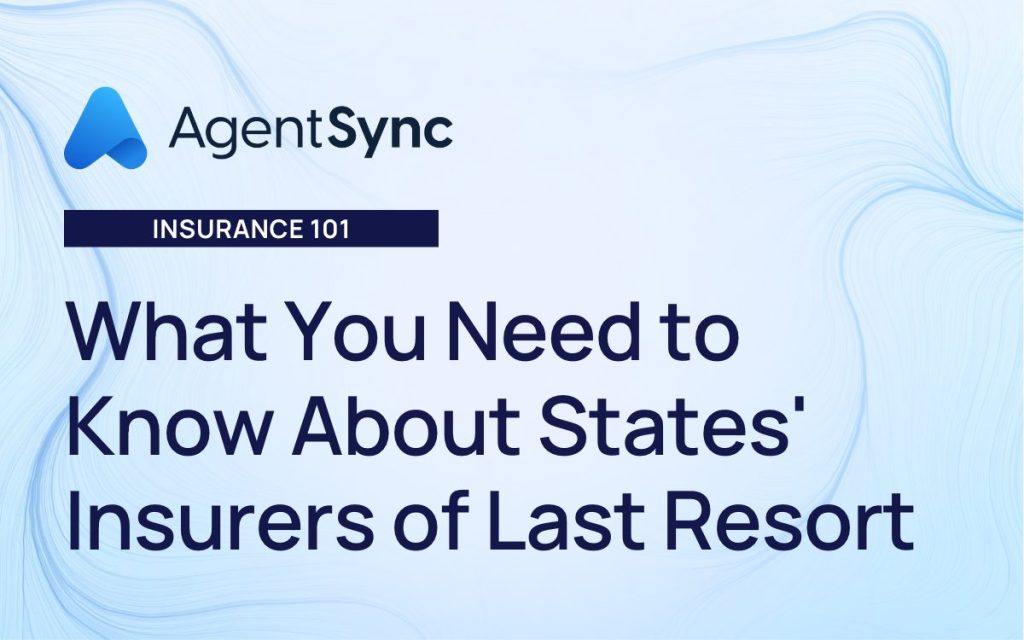What You Need to Know About States’ Insurers of Last Resort

As Florida’s state-backed insurer of last resort takes on more than a million policies, Colorado considers devising its own insurance scheme to provide coverage for those no longer eligible in fire-risk zones. As other states enjoy not having their own insurance markets making headlines for a while, those unfamiliar with state-backed insurance may be interested in a primer.
If you cringe a little on hearing “state-backed insurance,” you’re not alone. Beyond social insurance programs such as Social Security, Medicare, and Medicaid, or the federal National Flood Insurance Program, insurance in the U.S. is a heavily privatized business. So the idea of state-sponsored insurance can be jarring. Yet, if traditional private insurance becomes unprofitable and unobtainable, states may choose to orchestrate a last-resort coverage option in order to shore up their economies.
What is an insurer of last resort?
An insurer of last resort is an insurance plan a state designs to fill gaps in the private property insurance market. Because banks and other mortgage lenders that operate under the direction of Freddie Mac and Fannie Mae require proof of insurance to issue mortgage funds, aspiring or current homeowners and business owners in areas with high risks may struggle to secure mortgages.
In particular, areas known for hurricanes, wildfires, high winds, high crime rates, or earthquake risks may find it hard to procure insurance through typical market insurers. Insurance is a for-profit business – insurers have to do more than break even in a given year. And, as anyone in insurance knows, that profit margin is based on insuring risks that aren’t guaranteed to happen. It’s what makes health insurance difficult to price and insure equitably – at some point, pretty much everyone will need health care, so figuring out a risk pool is tricky.
But insuring a risk like fire for homeowners is based on the idea that only so many homes will suffer fire losses in any given period. An insurer can pool the risk of hundreds of houses and charge premiums that will more than adequately cover the insurance of rebuilding a single home that burns to the ground. This math obviously gets turned on its head in the face of natural disasters, such as a wildfire that torches entire neighborhoods. And, when you factor in that the conditions which caused the wildfire – drought, high winds, lack of firebreaks, wood-frame houses – have fundamentally not changed, insurers then may decline to issue new coverage in the affected area, and may not approve renewals for existing contracts.
If you’ve been paying attention, that’s more or less what’s happened in Colorado in the aftermath of the 2020 and 2021 fire seasons. Hence, Colorado’s legislature is considering its own insurer of last resort plan for fire coverage.
How do you know if your state has an insurer of last resort?
It might be a state insurer of last resort if it is a:
- FAIR plan
- Beach/wind plan
- A plan named “Citizens Property” something or other
Many insurers of last resort have received criticism when their “last resort” alternative coverage provides more robust coverage at a more affordable premium than private market insurance plans. But most are quite clear that they intend to be part of the residual market, with some even going so far as to direct producers to first pursue surplus lines coverage for a consumer before turning to the state insurer of last resort.
What are FAIR plans?
Fair Access to Insurance Requirements (FAIR) plans were initially enacted by more than a dozen states across the country in response to the Fair Housing Act of 1968 (also known as the Civil Rights Act of 1968). As the nation turned its attention to racial discrimination in industries including housing and insurance, the federal government designed FAIR plans, which states then could decide to enact as they saw fit. In 1968, 26 states, the District of Columbia, and Puerto Rico enacted their own versions of FAIR plans to make it easier for people to obtain coverage for areas traditional insurers might decry as having high crime.
Over time, in many states, these residual market plans morphed to also take on homeowners or corporate insurance for property that sits in precarious, high-risk areas such as in a frequent hurricane, wildfire, or tornado pathway.
What are beach/wind plans?
Beach and windstorm plans are state-sponsored insurance pools, much like FAIR plans, to provide last-resort insurance coverage to property owners whose properties are in areas with too great a risk to insure through the voluntary insurance market. Unlike FAIR plans, however, beach and wind plans tend to be limited geographically to coastal properties (with the exception of Louisiana and Florida, which extend beach/wind last resort coverage across the whole state).
Another important distinction: While some FAIR plans include an element of beach and windstorm coverage as a possible sidecar coverage, or built into FAIR policies, others specifically exclude beach and wind coverage from FAIR policies.
State administration of insurers of last resort
Although the federal regulations that authorize state FAIR plans and other last-resort insurance instances give states the direct authority to administer these residual market plans, most directly avoid it. Instead, some are headed up by board members representing the major insurers of the private market in that state. Others have boards composed of state appointees.
These shared market plans tend to have rates set and approved by state departments of insurance, even in states where the DOI otherwise lacks rate-setting authority. And FAIR plans, beach/wind plans, and other last-resort insurers generally have more oversight from the DOI or state legislature than their private insurer counterparts.
The daily administration of these plans varies, but is generally formed as a separately staffed entity, although there are typically no staffed producers or adjusters.
Underwriting with insurers of last resort
Just because a state-sponsored insurer is a last resort doesn’t mean it has to accept every applicant. In fact, according to the initial federal authorization for state-backed insurers, they have to make an effort to ensure each property is fundamentally worth underwriting. This means insurers of last resort can require property owners to take basic steps to protect themselves from risks. In high-crime areas, that could mean installing certain locks or security features. In windstorm-prone geographies, that could mean reinforcing structures or installing wind breaks.
The bottom line is that, although they are state-backed insurance, it would be a mistake to think of these insurers as “everyone’s insurance option.” Many states take pains to ensure their plans are somewhat more expensive and come with more limitations than private market plans, such as Washington’s FAIR plan, which sets property limits for fire damage policies at $1.5 million. Most states’ express intention is to incentivize policyholders to turn to private insurers if at all possible.
How are state-backed insurance plans funded?
As our good friend Billy Shakespeare would say, “Ay, there’s the rub.” The reason last-resort insurance plans aren’t the norm is because, in most cases, the state may provide a heightened administrative and oversight role, but the financial backing is still mostly via premiums. The next line of defense for state-backed insurance tends to be reserves that rely on funding from the insurers of the state, with a state-backed insurer charging other property insurers administrative fees in proportion to their business dealings in the state.
State-backed insurers may have the authority to issue bonds to provide catastrophic coverage, or may also fund their reserves with surcharges on similar private policy sales in the state. And some states go so far as to require proof of coverage denials from applicants before looking into coverage.
When states collect more than required expenses in any given year, many of them put that money into a catastrophic reserve fund to provide a cushion in years where, say, a massive hurricane causes scores of deaths and billions in damage that has a disparate impact on coastal property.
State-backed insurance also heavily relies on reinsurance contracts to provide the underlying guarantees.
Other kinds of state-backed insurance plans
While this blog is focused on property insurance, such as homeowners and commercial properties, many states have auto insurance pools to cover drivers with particular accident histories, or manage workers compensation pools on behalf of the businesses operating in the state.
As we covered, a state’s last-resort property insurance plan may be specific to certain risks and exclude others. Plans specific to fire or wind may not cover water damage. And, of course, the National Flood Insurance Program is a federally operated program that works on the same level as state-operated insurance plans, but on a larger scale.
What’s the difference between state insurers of last resort and guaranty funds?
State-backed insurers and guaranty funds aren’t completely unrelated; state-backed insurers cover insureds who don’t have options in the private insurance market, and guaranty funds provide a small safety net in case a private insurer fails.
If you’re interested in more on guaranty funds, you might be a fan of our Solvency Series (truly, who can resist a blog series dedicated to the praises of the unsung work of insurance?). Guaranty funds are the reserve pools that insurers use to shore up the market in case an insurer goes belly-up and can’t fulfill its contracts. And, in terms of their function, they operate somewhat similar to many insurances of last resort, with basic guarantees paid from pools of fees from insurers in that state’s market, often based on market share.
Who sells insurance of last resort?
Broadly, in many states, any licensed producer who has a property and casualty (P&C) license may function as a sort of broker to help a consumer access insurance of last resort. But this isn’t universal: Different states may require last-resort producers to have specific training or maintain an appointment with the last-resort carrier.
Since they don’t necessarily operate with any appointed or affiliated producer force, FAIR and beach plans of last resort may not need to manage producer licensing compliance. But if you need to cross your Ts and dot your Is for producer licensing or appointments, see how AgentSync can help you lessen your risk, lower your costs, and look good while doing it.
States with insurance of last resort
Currently, there are 30-plus states that maintain some sort of insurer of last resort or FAIR plan for property insurance. In fact, those state insurance plans are generally members of Property Insurance Plans Service Office, or PIPSO, a business league that helps them coordinate for efficiency.
While the Colorado Department of Insurance considers the creation of its own residual insurance marketplace to address those left uninsured in the wake of the Boulder and Marshall fires, following are the current state property and casualty insurers of last resort:
Alabama Insurance Underwriting Association:
California FAIR Plan Association:
Connecticut FAIR Plan:
Insurance Placement Facility of Delaware:
District of Columbia Property Insurance Facility:
Florida DBA: Citizen’s Property Insurance Corporation:
Georgia Underwriting Association:
Hawaii Property Insurance Association:
Illinois FAIR Plan Association:
Indiana Basic Property Insurance Underwriting Association:
Iowa FAIR Plan Association:
Kansas All-Industry Placement Facility:
Kentucky FAIR Plan and Reinsurance Association:
Louisiana Insurance Underwriting Plan & Joint Reinsurance Plan:
Maryland Joint Insurance Association:
Massachusetts Property Insurance Underwriting Association:
Michigan Basic Property Insurance Association:
Mississippi Windstorm Underwriting Association:
Missouri Property Insurance Placement Facility:
New Jersey Insurance Underwriting Association:
New Mexico Property Insurance Program:
New York Property Insurance Underwriting Association:
Ohio FAIR Plan Underwriting Association:
Oregon FAIR Plan Association:
Insurance Placement Facility of Pennsylvania:
Rhode Island Joint Reinsurance Association:
South Carolina Wind & Hail Association:
Texas FAIR Plan Association:
Texas Windstorm Insurance Association:
Virginia Property Insurance Association:
Washington FAIR Plan:
West Virginia Essential Property Insurance Association:
Wisconsin Insurance Plan:

